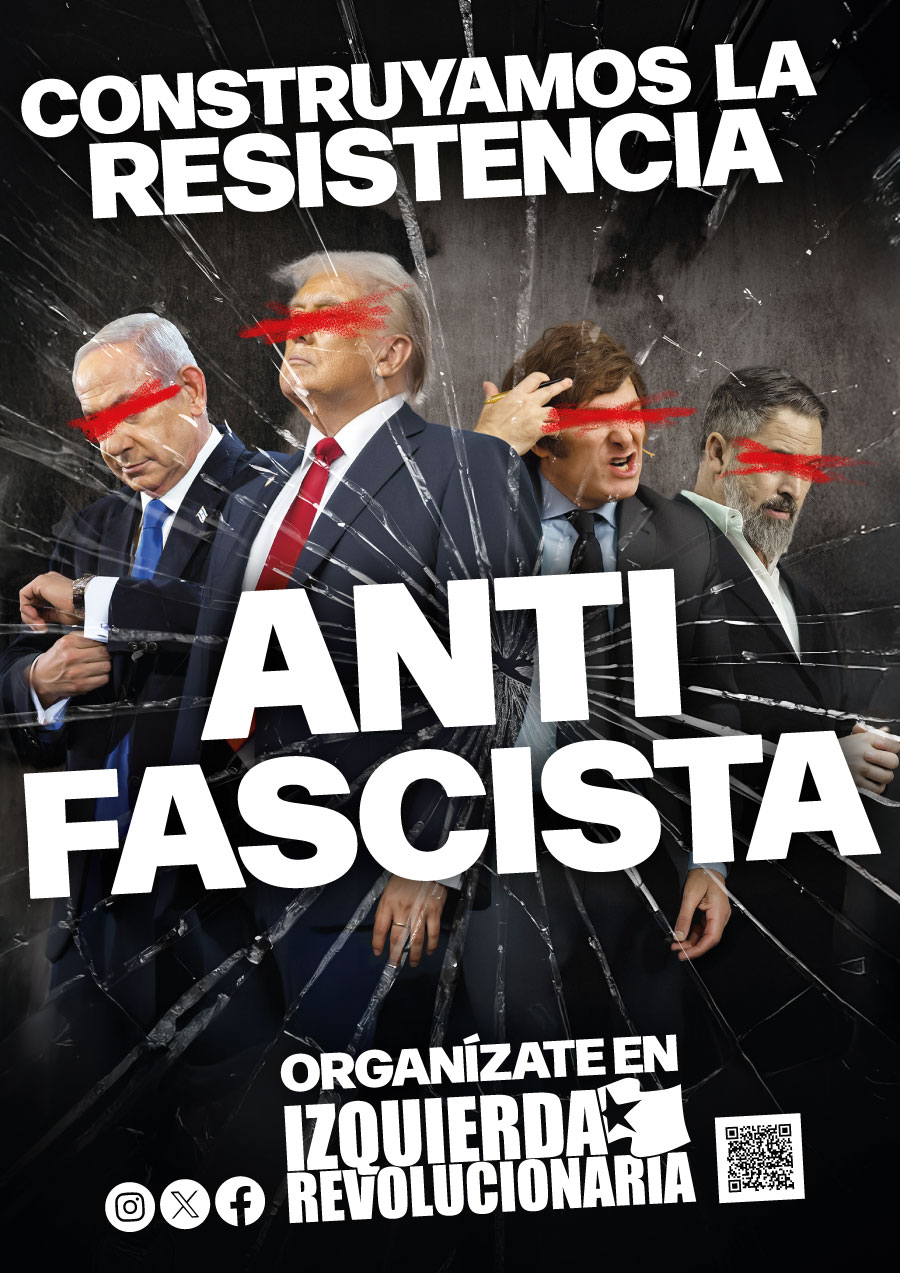On October 1, the biggest uprising of the Iraqi masses of the last decades began. The images we see in the news and social networks are overwhelming: thousands of young people face unarmed police and the army, who are repressing with real ammunition in shootings that according to journalists who lived the fighting against the State Islamic are the most brutal they have witnessed. Although this wild repression has left more than one hundred dead - some sources raise this figure to 180 - more than 6,000 injured and hundreds of detainees, protesters have not left the streets.
This massive social earthquake began in Baghdad, in a mass demonstration without the direction of any party or religious group. The slogans of the movement reveal the Iraqi capitalist regime and crudely show the country's situation 16 years after the imperialist invasion: against unemployment, against rampant corruption, against the deplorable state of public services, against the government of a country with the fifth largest oil reserves in the world that is unable to provide electricity to its population, against sectarianism and interference by foreign powers - targeting both the US and Iran - and, showing widespread tiredness towards the entire institutional apparatus. The slogan of the Arab spring of 2011 "the people want the regime to fall" was recovered.
The demonstrations spread rapidly southward, mostly Shiite, emphasizing the non-sectarian nature of the movement, something that reflects the lessons learned from years of sectarianism promoted by the different regional powers and by the imperialism that has used the poison of the religious division.
The repression fails, the Government tries to negotiate
The Government's response was the most brutal repression: antiriot police, anti-terrorist and army units, which have machine-gunned crowds; closure for several days of Internet access to 75% of the population; curfew for 48 hours, which was lifted at the evidence that it did not stop the movement.
Faced with the failure of the repression, the Government is now trying to play the negotiation card. The Government has recognized "excesses" and "wrong measures against protesters", has announced compensation for relatives of murdered and injured and an increase in assistance and has promised generic "changes" but limited by a "we have no magic solutions." An attempt to deceive the masses to return home.
The prime minister, Adel Abdel Mahdi, is the typical bourgeois upstart politician. The former member of the leadership of the Communist Party converted to Khomeini's fundamentalism in exile, to end up gaining ground in the puppet regime installed by the US invasion, first as finance minister between 2004 and 2005 and then as vice president between 2005 and 2011.
It has been 16 years since the imperialist invasion that evicted Saddam Hussein. 60% of the 40 million Iraqis are under 30, and youth unemployment is between 25% and 40%, according to sources. The majority of the population has only known the post-war nightmare living conditions in Iraq. According to www.middleeasteye.net, citing official figures, "since 2004, about 450 billion dollars of public funds have vanished in the pockets of politicians and businessmen." There is no need for "magic solutions" but to expropriate that wealth to the parasites that enjoy it and put it in the hands of the majority of the population.
Although during the revolution that traversed across the Arab world in 2011, the mobilizations in Iraq had a much more limited scope than in other countries, the class struggle did not stop. Despite the sectarian nightmare in the form of civil wars fostered by imperialism or the rise of the Islamic State, there have been important mobilizations and attempts to organize the labor movement.
In 2016 there was a massive mobilization in Baghdad that ended up soaking through the Green Zone - an armored neighborhood where the Government and embassies are located - and assaulting Parliament. In the summer of 2018, a new uprising broke out in the Shia south, with an epicenter in Basra, against power cuts and the infamous conditions of public services. This revolt marked the end of aspirations for the re-election of former Prime Minister Haider al-Abadi. However, no mobilization had the extent, depth, and component of fighting sectarianism as clear as the one we are witnessing now.
Al Sadr´s role
In the absence of a revolutionary organization, other movements have capitalized on widespread discontent. Perhaps the most significant is that of cleric Muqtada Al Sadr, with a mass base that began among the most oppressed and impoverished Shiite population but has been growing using a non-sectarian Iraqi nationalist rhetoric, which has allowed him to extend his base. In recent years, the Al Sadr movement has acted in alliance with the Communist Party, led the 2016 mobilization in Baghdad, presented themselves together to the last elections and were the most voted candidacy.
However, although it may have been a thermometer of the environment among the masses at different times, Al Sadr and his movement are far from being revolutionaries and act without questioning the status quo. Just a few weeks before the movement broke out, on September 10, Al Sadr visited Iran. There he was photographed with Ayatollah Khamenei and Qasem Soleimani, responsible for the activity of the Iranian Revolutionary Guard abroad (Syria, Iraq, etc.). Although Al Sadr is trying to reach the masses calling for the resignation of Prime Minister Mahdi, it will not be easy. In the first place, the movement does not only want Mahdi's resignation, they also want a radical change in his living conditions, and that change begins with the fall of the regime. Secondly, Al Sadr and the Communist Party were crucial for the formation of the reactionary Government of Mahdi. Thirdly, that photo with the responsibles of Iran's intervention in Iraq ruined the alleged national independence of its movement.
Iran and EEUU
Iraq has been a battlefield between the US and Iran since 2003. At one point, US imperialism had to rely on Iran to control the situation in Iraq. This is what was behind the 2015 nuclear agreement that Trump broke up last year. Both control different plots of power and different sectors of the military apparatus and both have received with concern this mass movement. The US State Department stated that they respect the right to protest, they condemn violence and call for calm. Also, they support stability and security in Iraq. A tenderness that contrasts with their statements towards Venezuela. Imperialism has 5,000 soldiers in Iraq and wants to maintain the greatest possible control of the country at the lowest cost.
The statements of the Iranian regime point, as always in these cases, to infiltrators backed by the US, Saudi Arabia, and Israel. They have reasons for being alarmed. On the one hand, a mass movement is questioning its carefully constructed position in Iraq more than ever since 2003. On the other hand, they fear that this non-sectarian revolt could spread within Iran's borders and revive the mobilizations leaded by the Iranian working class in 2017-18 against unemployment, the fall in living standards and the widespread social cuts, at a time when US sanctions against Iran are hitting their economy hard, with dramatic effects for the masses.
For a revolutionary alternative
The Iraqi rebellion is linked to a new rise in the class struggle in the Arab world. Starting with the revolutions in Algeria and Sudan and continuing with the mobilizations that have been flourishing against the dictatorship of General Sisi in Egypt, against austerity measures in Lebanon or the strike of more than one month of teachers against the Jordanian Government one year after the demonstrations that knocked down that country's prime minister.
We are in the first stages of large mass movements. Capitalism is moving around the world towards an economic crisis that will have very profound consequences, especially in areas such as the Middle East. The different movements of workers, young people, the poor, women ... in these countries in the past few years we can witness how the movement learns from its experience and also from its defeats. But one more step is necessary. The last decades have amply proved that neither the bourgeoisie of these countries nor imperialism has anything to offer but corruption, misery, and war.
One of the most chanted slogans in the demonstrations in Iraq has been `Neither political nor religious´, reflecting the rejection of the entire ruling class. No party has been able to establish itself as a spokesman for the masses and so far that has been a very positive factor. But from all areas (Government, official parties, religious authorities, imperialism ...) they will try to hijack the revolution to derail it. It is vital to build a revolutionary party, based on the working class, youth and the oppressed, the only force that has proven capable of turning the Iraqi capitalist regime upside down. A party that defends the expulsion of imperialism, overthrowing the oligarchies on which it relies, and the expropriation of the fundamental levers of the economy (oil, gas ...), putting them under the democratic control of the population. That is the task in Iraq, in the Middle East and the rest of the world.






















































